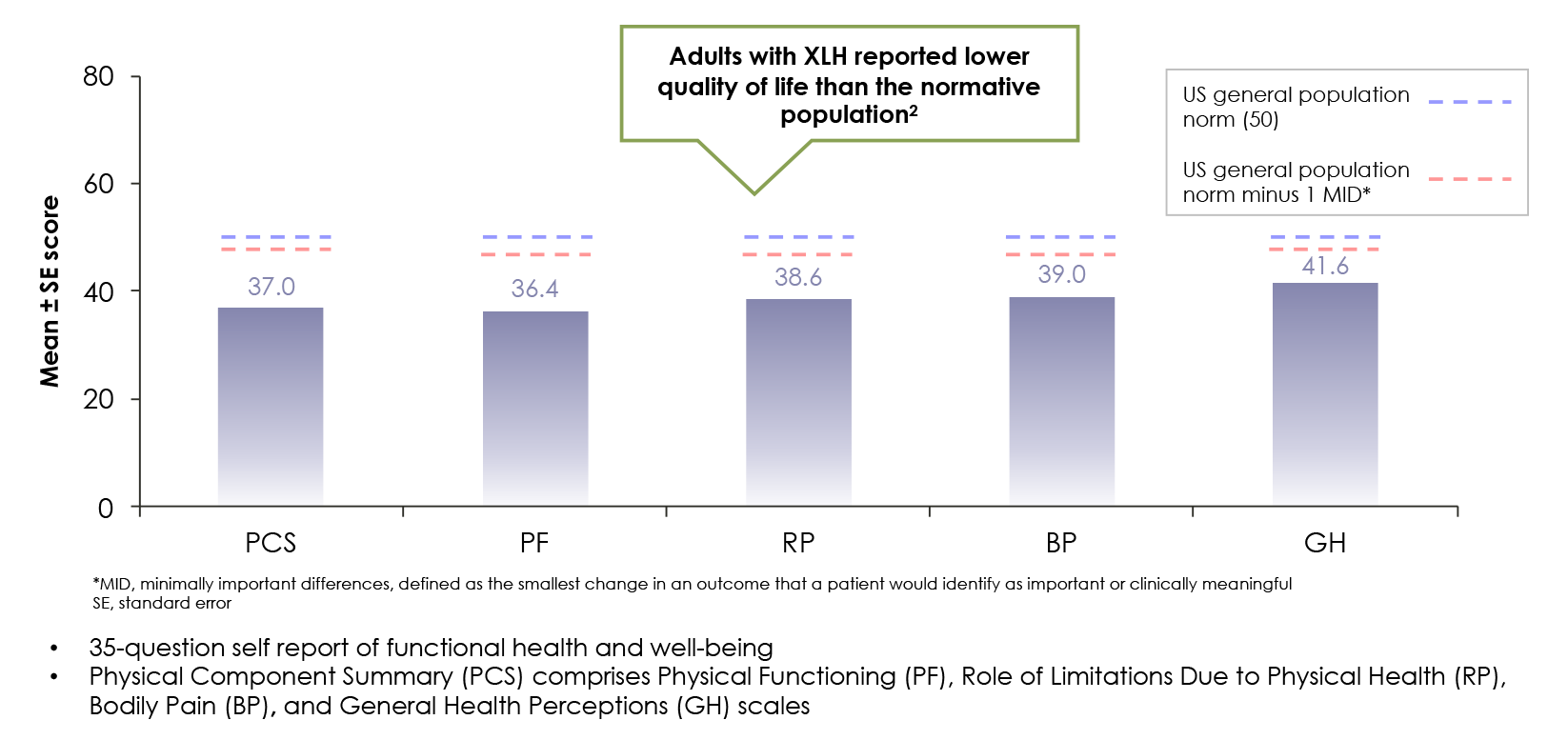Clinical manifestations in adult patients with XLH
Clinical manifestations in adults with XLH arise from1,2:
- New and continuing symptoms as a result of ongoing, active disease
- Unresolved complications of XLH from childhood
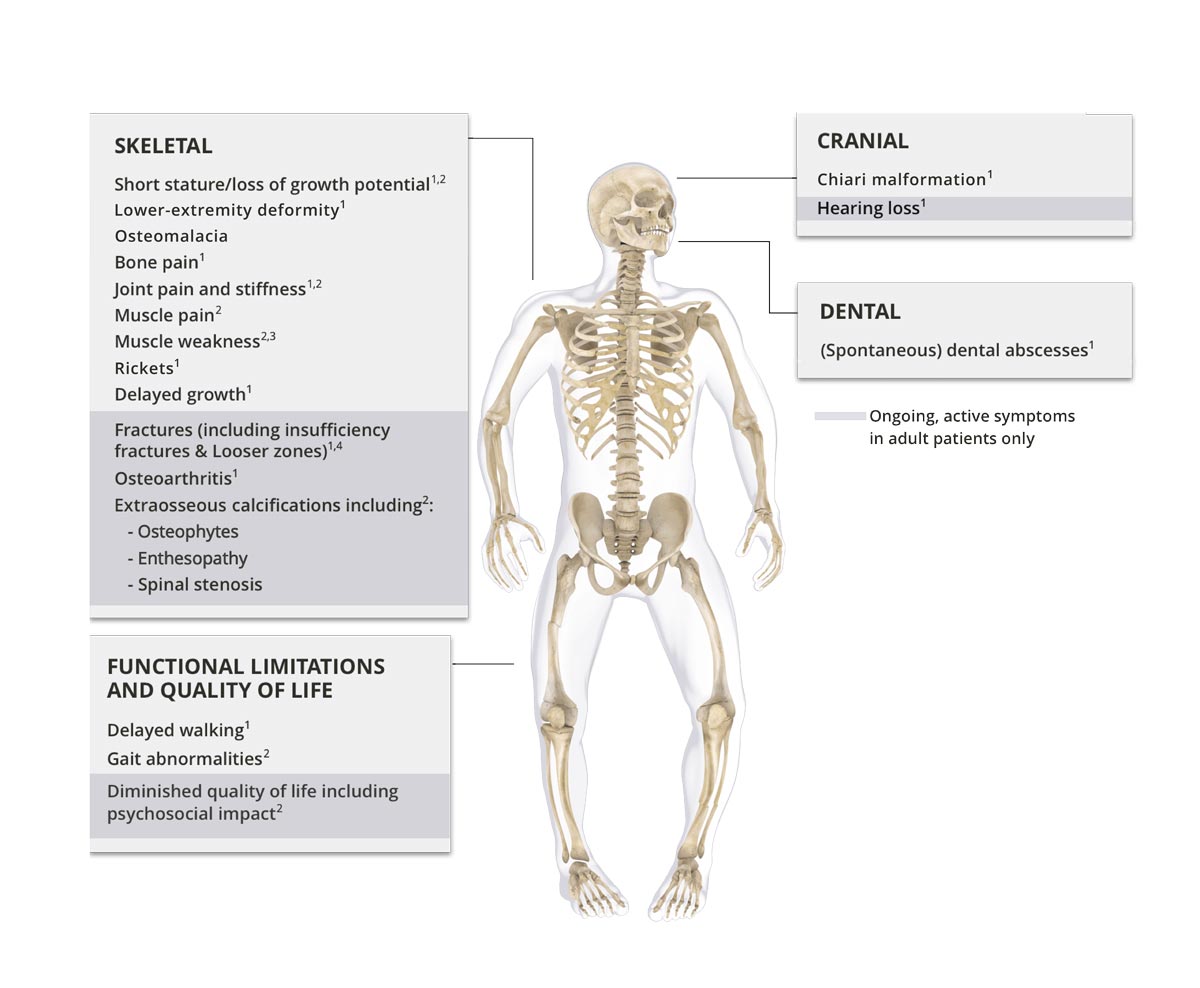

Skeletal manifestations
Several types of fractures, including insufficiency fractures and Looser zones (pseudofractures),4-6 can develop as a consequence of long-term weight bearing on weakened bones.1
These manifestations commonly result in spontaneous insufficiency fractures in the lower extremities and weight-bearing bones1
Nearly half of XLH patients reporting ever having fractures, with an average age at first fracture of 26.42
Skeletal manifestations continue into adulthood1,2,11
Ongoing, active disease in adults with XLH can cause several skeletal manifestations as a result of osteomalacia, or weakened bone.
Reported symptoms of osteomalacia include bone pain, muscle weakness and difficulty walking.
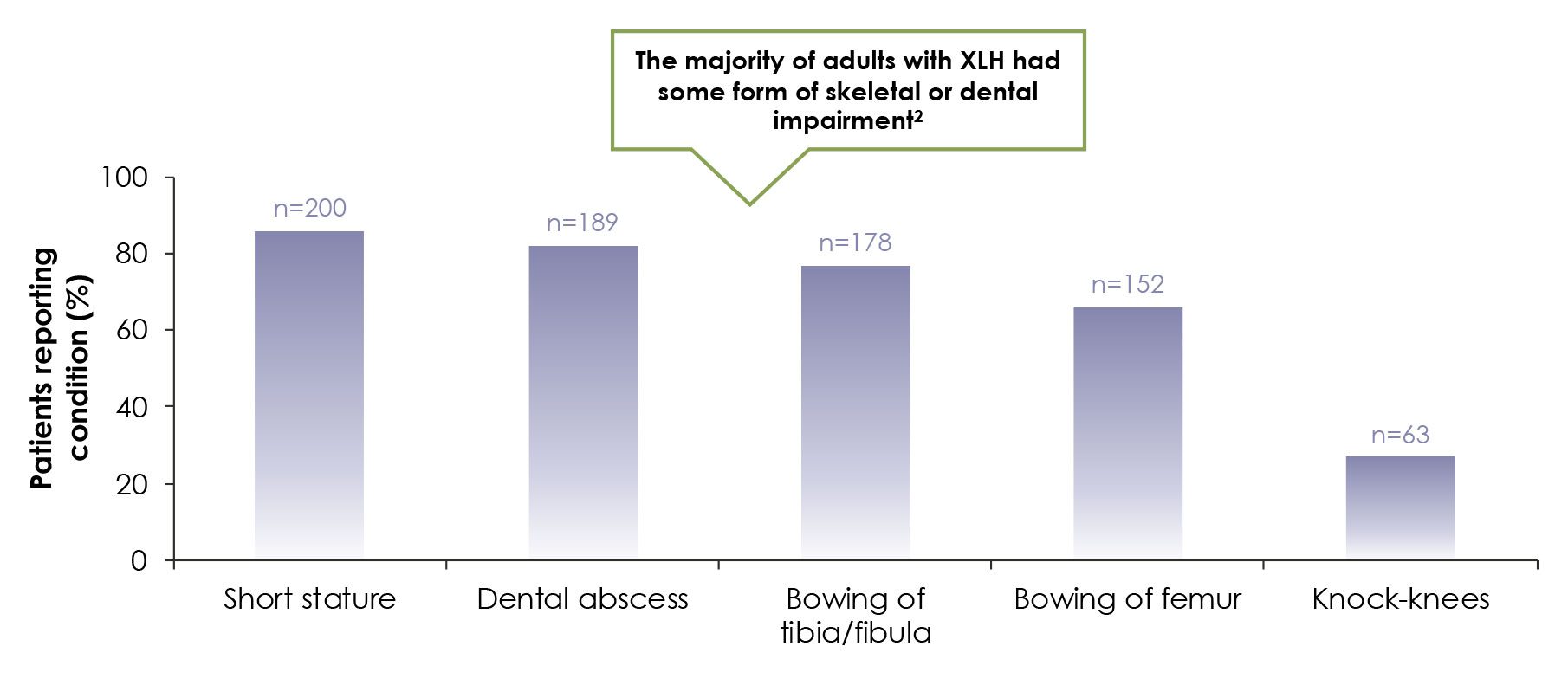
Bone repair and osteomalacia
Normal Bone Formation7,12,13
- Osteoclasts bind and initiate bone remodelling to repair bone damage
- The mineralisation front should normally occupy >80% of the osteoid surface, with a slight decrease in older patientsa

Osteomalacia7,12-14
- Osteoclasts have reduced ability to bind and initiate bone remodelling on undermineralised bone
- A mineralisation front of <20% represents a definite calcification defecta
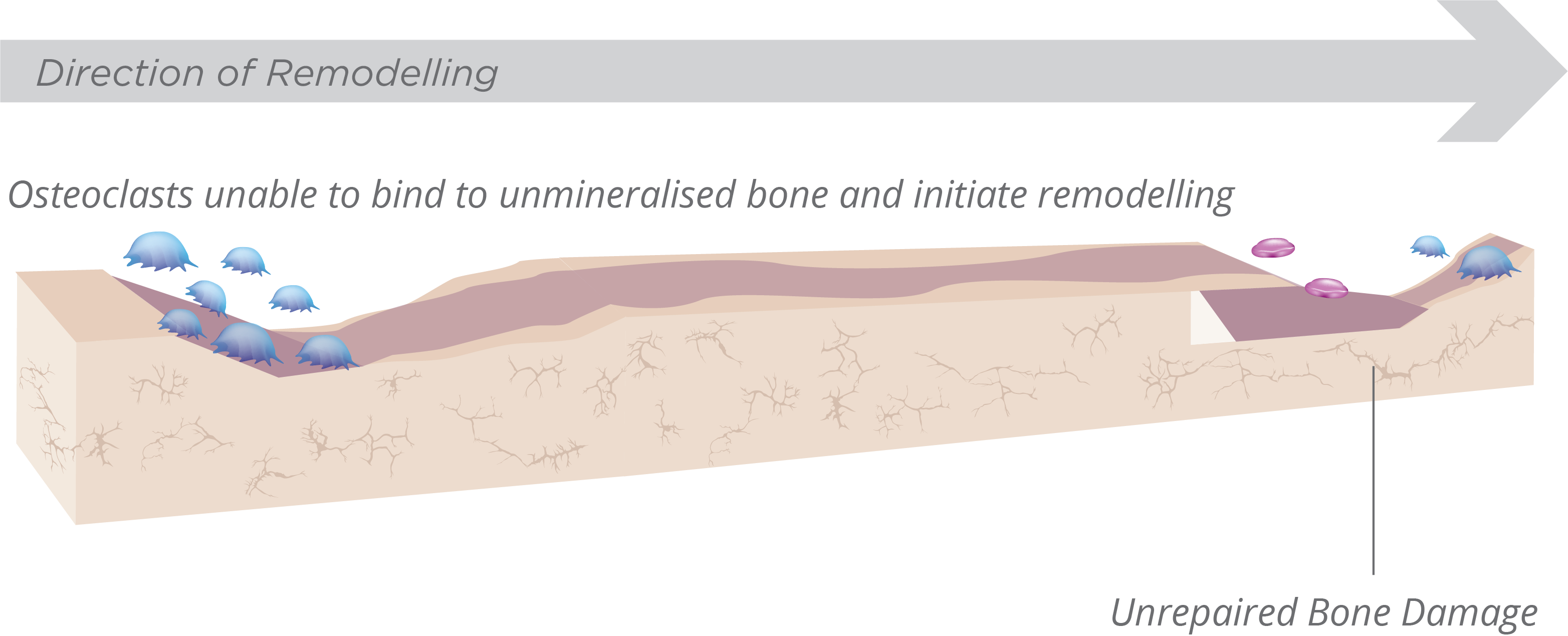
Ongoing, active disease in adults with XLH can lead to impaired physical function.2
Adult patients with XLH most commonly report decreased range of motion, and gait disturbances, as well as pain and the need for walking assistance.2,8
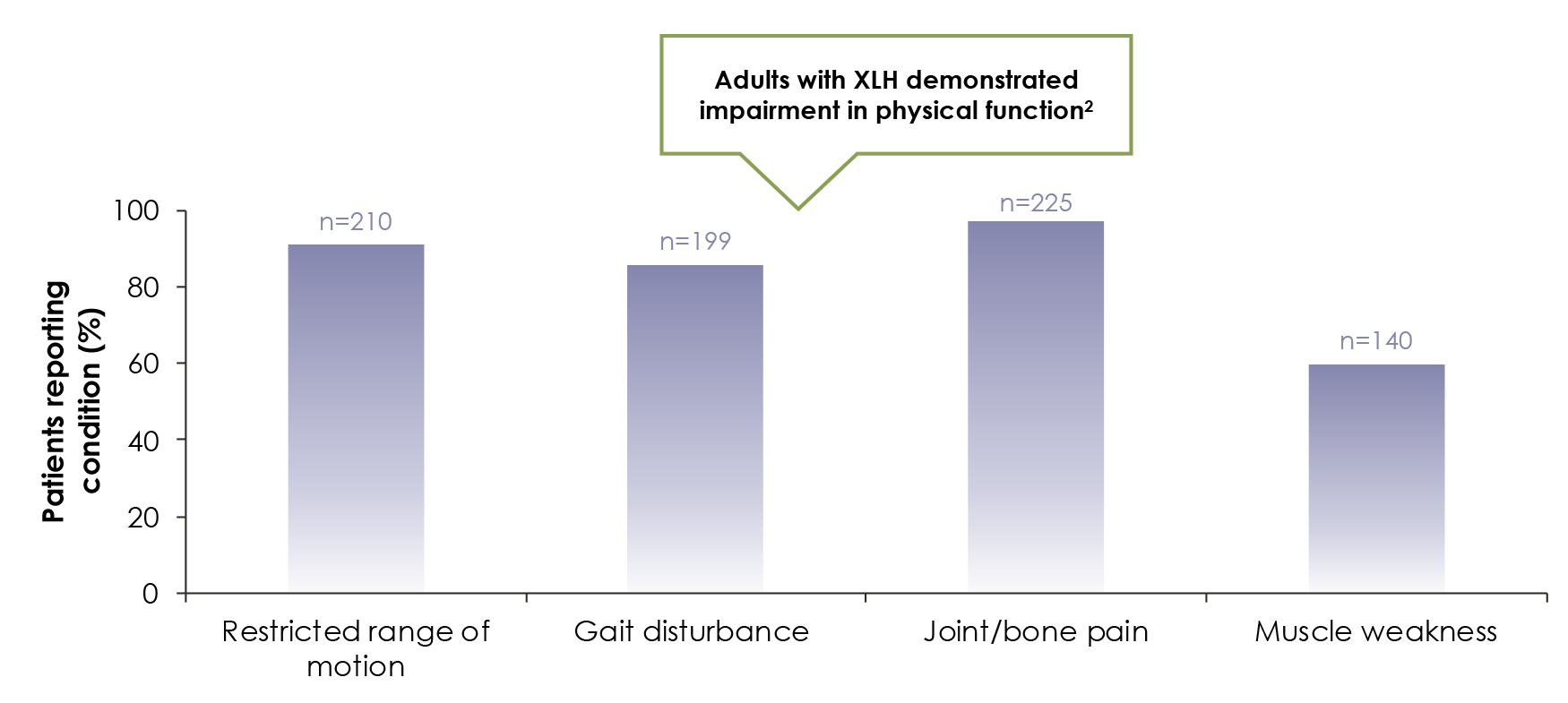
Many adults with XLH have significantly impaired quality of life2
